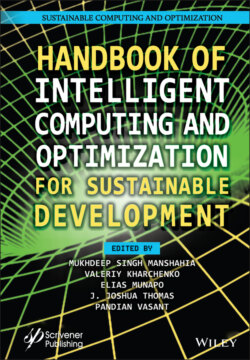Читать книгу Handbook of Intelligent Computing and Optimization for Sustainable Development - Группа авторов - Страница 131
5.4 Major Findings
ОглавлениеTo address the future upcoming challenges, a comprehensive review of existing literature in the context of ML techniques for emerging wireless communication systems has been investigate in this chapter. A detailed literature survey on AMC, RA, channel estimation and detection, and ML in mmWave communication has been presented. It has been found that ML/DL architectures have great potential to solve the emerging wireless communication problems with improved QoS which cannot be addressed by the conventional model driven techniques. The ML-based systems are generally complex but can be defined in a form of subsystems which are well principled and easy to understand. These systems are statistical in nature and can provide a better performance guarantee.
First case study proposes the TF imaging-based AMC using convolution network-based DL techniques. It is observed that spectrogram images of modulation techniques fed to CNN were able to capture the important nonlinear characteristics of encountered due to the channel imperfections. Hence, CNN was trained to provide a dynamic MF effect for each type of modulation schemes. Thus, it is observed that classification accuracy of TF image trained network was enhanced to 10% compared to baseline model [19]. Further using extended class type at the output layer of the network improved the SNR estimation capability.
In the case of CSI feedback in massive MIMO, the proposed InceptNet showed superior recovery of the channel matrix compared to the baseline network [20] measured in terms of NMSE and cosine similarity. The implementation results of Incept-Net show 4.25 dB lesser NMSE for a lower compression ratio of 1/4 and 2.66 dB for a higher compression ratio of 1/32 and 0.01 higher cosine similarity for both compression ratios compared to CsiNet. Lower NMSE shows a better recovery of the channel matrix and higher cosine similarity shows better beamforming gain from UE to BS. The proposed model is based on the concepts of the autoencoder model and inception block that contains parallel convolutional layers. The encoder compresses the channel matrix using the inception block. The decoder has parallel inception blocks that contain multiple parallel convolutional layers of varied resolutions. The use of these convolutional layers enhanced the learning capability of the network and resulted in better compression and recovery of the channel matrix.
